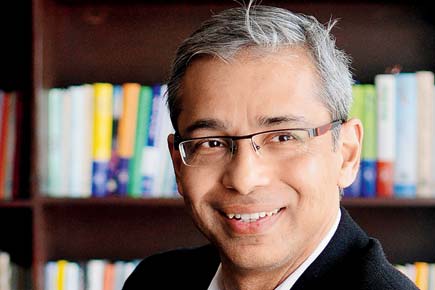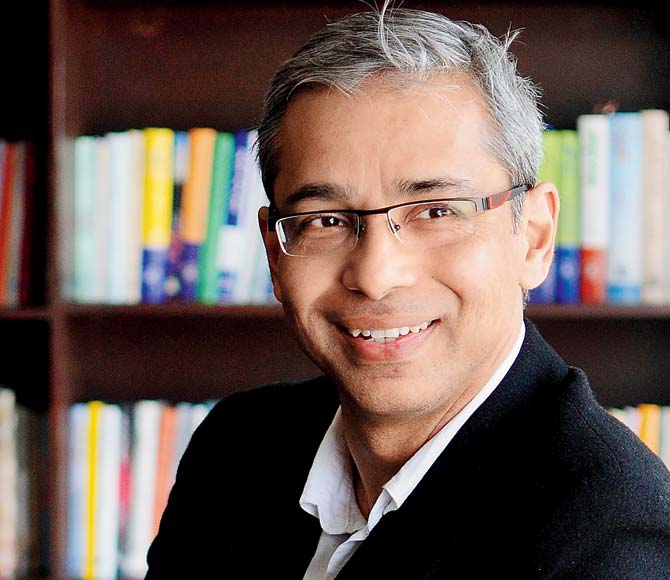An Urdu thesaurus on your phone is a great idea, and that’s what Musharraf Ali Farooqi brings you with a new app. Edited excerpts from an interview with the Pakistani author

![]() Q. What led you to the idea of building the app, Urdu Thesaurus? Why a thesaurus?
Q. What led you to the idea of building the app, Urdu Thesaurus? Why a thesaurus?
A. The Urdu Thesaurus (www.UrduThesaurus.com) began with the idea for a dictionary. In my work as a translator, I soon learned the value of portable resources. A significant part of my translation of the Urdu classic Dastan-e Amir Hamza (The Adventures of Amir Hamza) was done while commuting in buses and trains, to and from work, sitting in hospital wards when my mother was unwell, and a few pages were done even between dances, if I remember correctly. It had to be a light, portable resource. Again, classical Urdu prose typically uses a lot of Persian, Sanskrit, and Arabic terms. But there is no one Urdu dictionary, or, for that matter, no ten Urdu dictionaries, in which you could find all the terms you wish to look up. So, a composite lexicon that draws words from many sources was another sought feature. I felt that if we could create such a resource, the hindrance to reading, understanding and translating our classics will be removed for the coming generations. But it is a very complex and expensive undertaking. So I thought of building the thesaurus first, because, it was simpler to create, test and employ.
ADVERTISEMENT

Musharraf Ali Farooqi. Pic Courtesy/Sharjeel Ahmad)
Q. How many books did you have to consult to complete the thesaurus?
A. Nine dictionaries were used in the first phase. There will be more, as we add more features like antonym, phrases, idioms and proverbs.
Q. Will you keep adding words to it? What is the total number of words that will form part of the thesaurus?
A. Over 40,000 words and over 20,000 synonym sets are currently available via the Urdu Thesaurus website and mobile app, and they represent about 50 per cent of the total synonyms data. An equal amount of data will be added just for the synonyms. We will have a fair idea of the data size when the dictionary is finally linked.
Q. Do you think the app can help create better awareness about Urdu language both in India and Pakistan?
A. It will, once it is integrated with the Devanagari script. Millions of people read and write Urdu in the Devanagari script, and if we are talking about the interest in a language and not just a script, the two scripts need to be integrated. We are talking to some partners in academia, and would love to hear from others.
Q. You have kept the user interface very minimal?
A. Because the utility of a lexical resource such as a thesaurus demands simplicity.
Q. While Nastaliq script is more common both in India and Pakistan, the app uses Naskh script. Was it because of programming restrictions?
A. One reason is that the Nastaliq font is not fully supported by OpenType, but we are working on incorporating it in the mobile app.
Q. Who is the target audience for the app?
A. By Google Analytics count taken today, the Urdu Thesaurus is being used in 557 cities in 73 countries. The target audience is anyone anywhere reading and writing Urdu or Hindi.
Q. How long did it take you to develop the app? Who else did you collaborate with for the app?
A. The technical aspects of the mobile app and the database were developed in a parallel over a period of nine months. A small team handled the design, development and testing.
Q. The app comes without any ads and is available for free download. Will it remain free, or are you planning to monetize the app to fund its further development?
A. We wish to keep it free, and attract funding based on the excellence of the resource, and its utility.
Q. Google has released its own design language, which offers developers guidelines to make user-friendly apps in sync with modern design sensibilities. Would you be upgrading the UI of the app anytime soon? OR do you wish to retain the minimal look in the future?
A. You will see some interface changes in the next release of the mobile app, but the focus on a clean, simple design that serves the product’s main function will remain. Material design and minimalism are not mutually exclusive, as Awais Athar, our technology advisor says.
Q. Are you planning to collaborate with any of the leading publishing houses to release a print version of the thesaurus?
A. We have plans for a print version once the beta testing is over, the planned features are in place, and the complete online version is released.
 Subscribe today by clicking the link and stay updated with the latest news!" Click here!
Subscribe today by clicking the link and stay updated with the latest news!" Click here!






